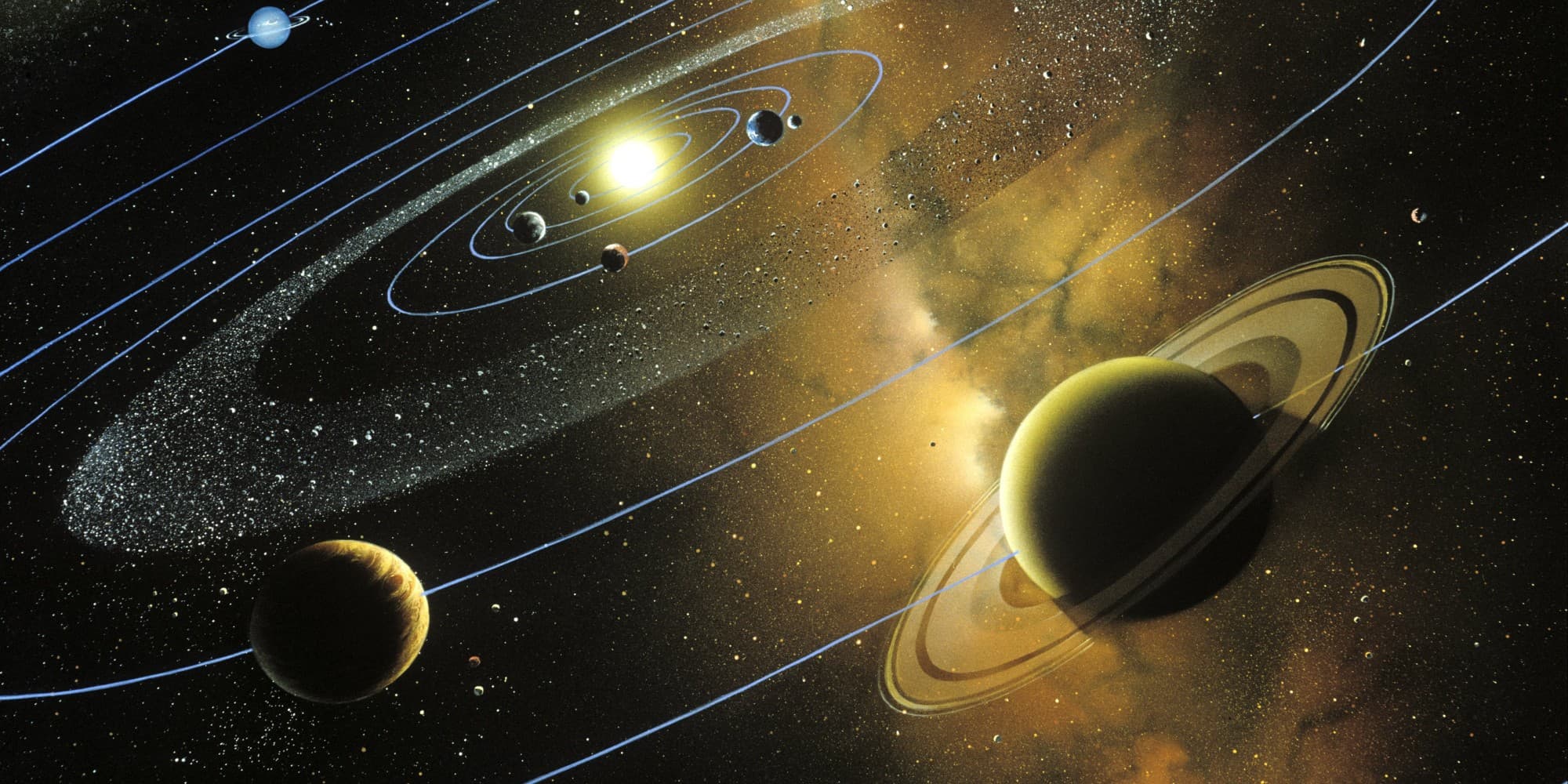Last year Voyager 1 left our solar system. Kind of, depending on how you look at it. There were lots of stories in the news about how NASA officially announced that Voyager 1 has left our solar system, but the actual announcement was that the probe has crossed what is known as the heliopause.
The Sun gives off more than just light and heat. It also gives off a stream of charged particles. Most of these are electrons and protons (ionized hydrogen), and they stream away from the Sun to produce what is known as the solar wind. The solar wind interacts with the magnetic field of the sun, and together they create a kind of diffuse bubble of charged particles around the sun known as the heliosphere. This heliosphere prevents any interstellar charged particles from reaching us, as well as shielding us from some cosmic rays.
Eventually the stream of the solar wind slows down enough that the interstellar wind can push back, which creates a boundary known as the heliopause. Beyond the heliopause, the interstellar wind dominates. Beyond the heliopause is interstellar space.
Declarations that Voyager 1 has left the solar system have appeared off and on the past couple of years because the heliopause is not a hard line. Depending on solar activity it can vary a bit. Then there is the limitations of Voyager’s sensors. The probe is 36 years old, and most of its detectors are no longer operational. It’s transmission power is only about 23 watts, which is about the power of a refrigerator light bulb.
The probe still has two antennae that can detect magnetic fields. By observing the oscillations of magnetic fields, you can also get a handle on the density of ionized particles around Voyager 1, since the frequency of oscillations depends on the density of the plasma. In a recent paper it was shown that the density of electrons around Voyager has increased by a factor of 40. This is exactly what was expected as Voyager leaves the tenuous outer region of the heliosphere to enter the region of interstellar space.
If you define the limits of the heliosphere as the edge of our solar system, then Voyager has indeed achieved this task. But as you can see in the image above, this isn’t what is commonly thought of as the edge of the solar system. For one, Voyager is still under the influence of the Sun’s gravity. There are lots of objects that orbit the Sun at a distance much greater than Voyager. For example, the orbit of Sedna (a 1,000 km wide trans-Neptunian object) takes it more than 900 AU from the Sun. In comparison, Voyager 1 is about 125 AU from the Sun. So it hasn’t really left the solar system at all. If you consider the outer edge of the Oort cloud to be the limit of our solar system, then Voyager 1 is just getting started.
So while you could say Elvis has left the building, he hasn’t yet left town.
This post was written by Brian Koberlein and was originally published on One Universe at a Time.
Share This Article
